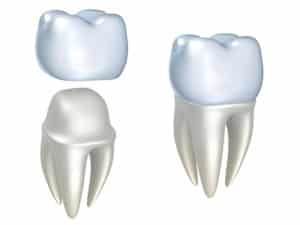
A dental bridge consists of two or more crowns for the teeth that are on both sides of the gap. It’s a false tooth which is held in place by teeth on either side of the gap. Though pontics might be made using various materials like gold, porcelain is the most common material that they are made using.
This is because porcelain allows them to blend with your natural teeth aesthetically.
What Are Some of The Proven Benefits Of Dental Bridges
Dental bridges are the best alternative for a missing tooth because they will help restore your ability to speak correctly, maintain the shape of your face, and prevent the remaining teeth from moving out of position. They will also help you distribute the various forces in your bite since they act as a replacement for missing teeth.
Types of Dental Bridges
Traditional bridges will entail creating an implant or crown for the tooth on any sides of the missing tooth. As the most common type of dental bridges, dental bridges are made using porcelain that is fused with ceramics or metal.
Cantilever bridges are also another type of dental bridges where there are alternative teeth on each side of missing teeth or tooth. While they were popular back in the days, Maryland bonded bridges also known as Maryland bridge or resin-bonded bridges, are not popular anymore.
Maryland bonded bridges are made using porcelain fused to plastic gums and teeth, which are then supported by a porcelain or metal framework. Implant-supported bridge is the final type of dental bridges. As the name suggests, implant-supported bridge uses a dental implant instead of frameworks or crowns.
Depending on the bridge that you will settle for, the dental procedures can either take a day or a few months to be completed. Visit us, so that we can carefully examine your missing tooth and advice you accordingly.

 If your tooth is badly damaged or decayed, then you might have it fitted with a crown. Also known as a cap, crowns might be placed over a tooth for various reasons. On many occasions, teeth that are severely damaged or broken will be fitted with a crown.
If your tooth is badly damaged or decayed, then you might have it fitted with a crown. Also known as a cap, crowns might be placed over a tooth for various reasons. On many occasions, teeth that are severely damaged or broken will be fitted with a crown.